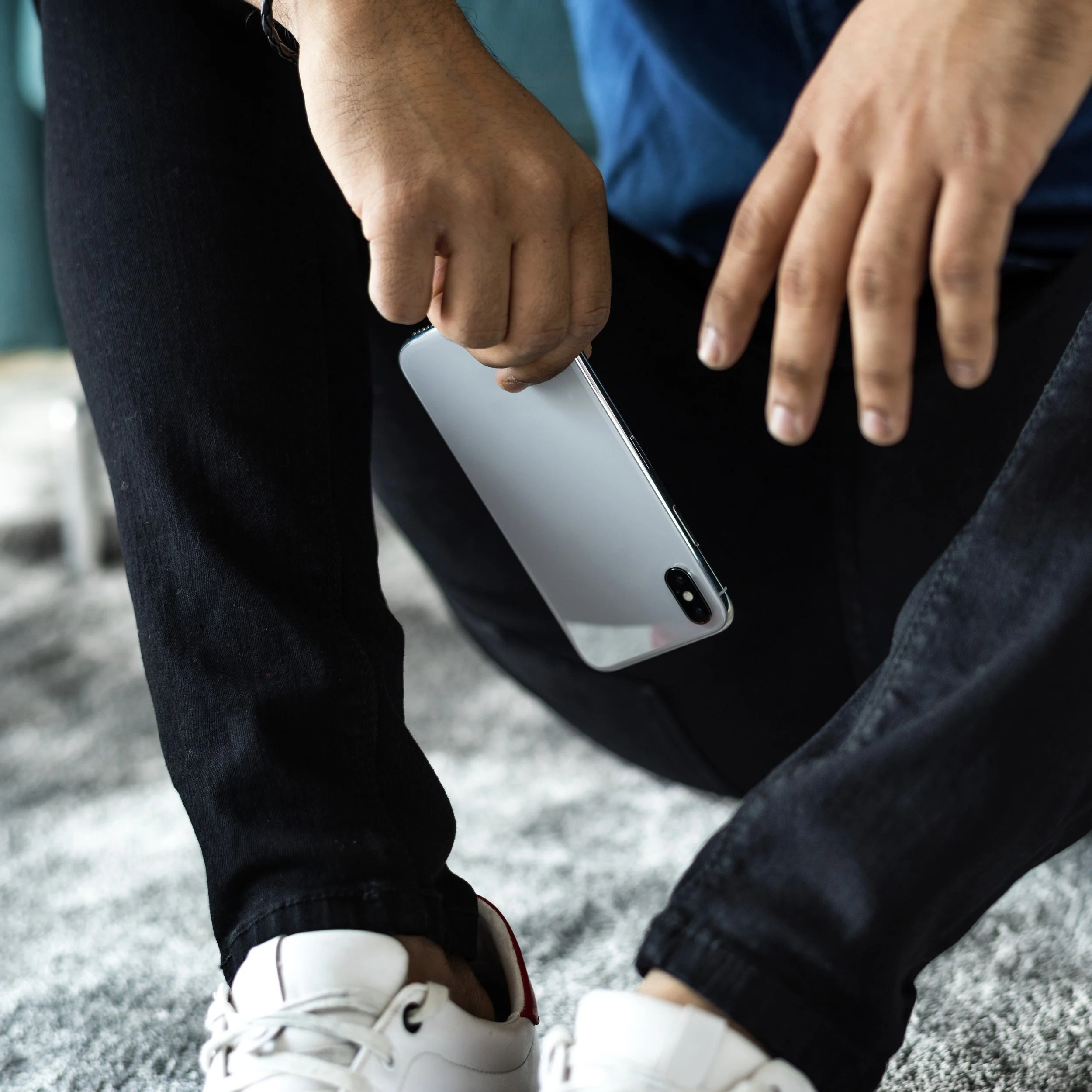Reclaiming Your Life From Screens
Photo courtesy of Freepik
In my last article I discussed the rise of addictive screen patterns, the dangers of screen addiction or overuse, and the common causes driving these behaviors. Today, let’s talk about how to make sure it’s truly you—not a screen—that’s in charge of your life.
Awareness First
It’s one thing to speak generally about possible causes and trends of compulsive screen use, but what’s going on with you? It’s important to address the specific ways screen addiction plays out in your life. I ended my previous article, Screen Addiction(?), with a series of questions to reflect on your screen habits. See if you can use your answers from that article, or reflect now to recognize two specific patterns:
Triggers: What are the events, people, places, things, feelings, etc. that trigger you to reach for that screen or electronic device?
Experience: What are the physical, mental, and emotional sensations of engaging in compulsive screen use? How does mindless use feel compared to purposeful and intention-driven usage?
Take a minute now to write down your answers, or commit some time this week to tracking one or both of these questions. A specific description of your particular screen habits will give you a much better foundation to build from than general ideas. For example, someone who looks at their phone because they are afraid of an awkward social interaction may need to take different steps than someone who watches TV to distract themselves from excessive worry.
Choosing Differently
Once you have a picture of your screen habits, investigate where you can make preventative choices. Let’s talk about cell phones as an example. As you head out the door, you could choose to leave the phone at home, or bring it with you but leave it in the car, or even put it in a bag instead of your pocket. Each of these choices puts a layer of prevention in place, making it just a little bit harder to engage in automatic screen usage. Other preemptive options could be deleting the most addicting apps, reducing the time you’re allowed on certain apps each day, or bringing a fidget or something else to keep your hands busy. Here, your creativity can be boundless. Using the data you gathered about your habits, consider how you can create that first layer of prevention. Even the smallest step is a step.
But what if you’re trying to address the compulsion itself? To take back your autonomy when you feel that urge pulling you to turn on the TV, go on the computer, take out your phone, etc. (and it’s not for a specific purpose), try one of these alternate behaviors:
Find someone to talk to (even if it means using your phone to call them)
Engage in mindfulness. Notice and observe your surroundings in as much detail as you can.
Get up and move. Go outside, walk around your house, pick something up, do anything that moves your body and literally changes your direction.
Take a deep breath. Hit pause and interrupt that compulsion even for a few seconds.
Journal. Write down the thoughts you may be avoiding or simply write about your day.
What’s your Why?
As Friedrich Nietzsche famously said, “He who has a why to live for can bear almost any how.” What is your motivation for making this change? When you’re hit with that intense compulsion or having a horrible day, all you will want in the moment is the comfort of the bright lights and distractions. To bear the pain of resisting, you’ll need a solid anchor—a why—to keep you steady on your commitment. Why would it be better for you to not engage in this behavior than to do it? What’s the cost of staying addicted to screens versus not being addicted? Each time you find yourself compelled to look at a screen mindlessly, bring that why to mind.
The Heart of the Matter
All of these tools can be helpful to get you started, but as you consider more seriously making a change, you’ll need to begin looking deeper at what’s driving your behaviors. There are reasons why you look to screens. There are particular uncomfortable things you seek to avoid or particular ways screens help you to cope. Whether the addiction is to screens or to something else, it is driven by what’s in your heart. You may be experiencing unresolved traumas from your past that you never learned to heal from and the screen helps you to numb. Or, boredom opens the door to all of those worries, fears, and ruminations that you don’t know how to manage and you seek constant distraction via electronics. Relationships may even be the heart of your screen addiction as you fear deep connection, awkwardness, or vulnerability, and the predictability of the phone is simply easier. No matter the reason, be assured that it’s real and it needs to be addressed.
Moving Forward
Technology is a powerful force. It has the potential to equip, connect, and accelerate our visions to new heights. It can also dominate our time, energy, and attention and pull us away from the present moment. If you have recognized today that you’re unhappy with your current screen usage and are feeling addicted, you’re ready to take the first step to make a change. It may seem daunting, but you’re not alone. Seek the support of a counseling professional, a friend, or a trusted person in your life to come alongside you on this journey. Ultimately, by becoming more aware of your own habits, identifying small steps you can take, and developing your why, you can begin to re-align your life to ensure your choices with screens are reflective of the person you want to be.

